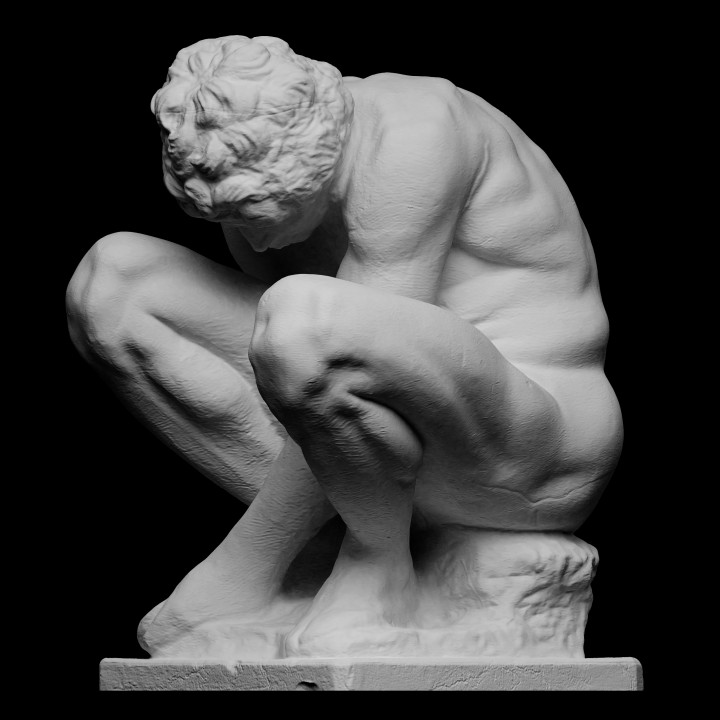
The Crouching Boy
myminifactory
Michelangelo, the Renaissance mastermind, was an accomplished architect and poet, renowned for creating the breathtaking frescoes in the Vatican's Sistine Chapel. His true calling, however, lay in sculpture. The conception of the crouching child is deeply connected to Michelangelo's work on the Medici Chapel - the family mausoleum of the rulers of Florence. A close view of the sculpture from the side reveals the physical power of the youth: the strong muscular legs, the tense arch of the curved back, and the precisely indicated relief of the muscles. He belongs to the same league as the famous David that Michelangelo created in his early years. But unlike the Old Testament hero proudly towering above the enemy, this young man appears constrained by some invisible force, bowed down with his head lowered. The boy's focus is on tending to his injured foot, perhaps an interpretation of the Spinario (thorn puller); oblivious to all that is happening around him, contributing to the sense of sorrow and pain that the piece evokes. With this, the work remains enigmatic. Some scholars see the piece as a representation of the unborn soul, others as a wounded soldier. Still others interpret the "Crouching Boy" as the personification of suffering or mourning. The Crouching Boy was created in the 1530s soon after the devastating events that had shaken Italy: the sacking of Rome by Emperor Charles V's forces, the fall of the republic, and the restoration of the Medici tyranny in Florence. Tragic times appeared in Michelangelo's works at this period. His style became ever more expressive. The rough surface of the marble shows traces of the chisel; the face, hands, and feet are only cursorily indicated. Some people believe that the sculpture is unfinished. However, it is a fact that such incompleteness was a deliberate technique in Michelangelo's late work, pioneered by Donatello - one of the many innovations with which he enriched the language of sculpture. In his preparatory sketch for a double wall tomb for Lorenzo de' Medici and his brother Giuliano de' Medici, Michelangelo included two such crouching figures. It would have been fitting for a work like the "Crouching Boy," with its sense of hunched sorrow, to have had a place in such a scheme. However, the two crouching boys were not included in his final design for the project.
With this file you will be able to print The Crouching Boy with your 3D printer. Click on the button and save the file on your computer to work, edit or customize your design. You can also find more 3D designs for printers on The Crouching Boy.
